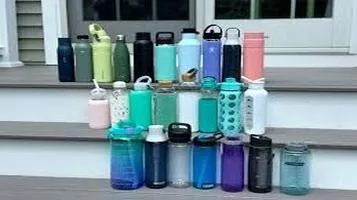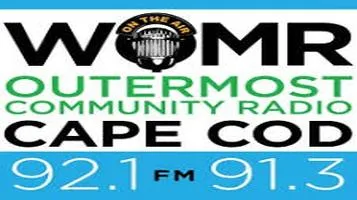Quilting Stencils: A Detailed Review
Quilting stencils are essential tools for quilters, offering a straightforward way to add intricate designs and patterns to quilts. These stencils are typically made from durable plastic or cardboard and feature a variety of shapes, motifs, and themes, ranging from traditional to contemporary designs. They serve as a guide for marking quilt tops, ensuring consistency and precision in stitching. By tracing the stencil patterns onto fabric, quilters can easily follow the lines, enhancing their projects with beautiful, uniform designs without the need for freehand drawing. Quilting stencils are versatile and reusable, making them an economical choice for quilters of all skill levels. They inspire creativity and help transform simple quilts into stunning works of art with professional-quality detailing.

Quilting stencils have become an indispensable tool for both novice and seasoned quilters alike. These handy templates help to create consistent, intricate, and beautiful designs on quilts, transforming a plain piece of fabric into a work of art. As quilting itself is a time-honored craft steeped in tradition, the introduction of stencils has added a modern twist, enhancing precision and efficiency. Here’s a comprehensive review of quilting stencils, shedding light on their advantages, limitations, and practical applications.
What Are Quilting Stencils?
Quilting stencils are typically made from durable materials like plastic or Mylar and feature pre-cut patterns that quilters can trace onto their fabric. These patterns range from simple geometric shapes to elaborate motifs inspired by nature, cultural symbols, and abstract art. The primary purpose of these stencils is to guide the quilter in stitching consistent and well-aligned designs, ensuring that the end product looks polished and professional.
Advantages of Using Quilting Stencils
1. Consistency and Precision:
One of the most significant benefits of using quilting stencils is the consistency they offer. Freehand quilting can lead to variations in design, which might not always be desirable, especially for those new to the craft. Stencils eliminate this issue by providing a template that can be replicated accurately across the quilt. This ensures that each design element is uniform, enhancing the overall appearance of the quilt.
2. Time-Saving:
Quilting is a labor-intensive process, and any tool that can save time without compromising quality is invaluable. Stencils allow quilters to quickly trace patterns onto fabric, significantly reducing the time spent on planning and drawing. This efficiency is particularly beneficial for larger projects or when working against a deadline.
3. Variety of Designs:
From traditional motifs like feathers and vines to modern abstract designs, quilting stencils offer an immense variety of patterns. This diversity enables quilters to experiment with different styles and themes, keeping the craft exciting and innovative. Additionally, the availability of themed stencil sets (e.g., holiday patterns, floral designs) allows for cohesive and themed quilts.
4. Ease of Use:
Quilting stencils are user-friendly, making them accessible to quilters of all skill levels. Most stencils come with clear instructions on how to use them, and the process generally involves simple steps: place the stencil on the fabric, trace the pattern using a fabric marker or chalk, and then quilt along the traced lines. The straightforward nature of stencils makes them a perfect tool for beginners looking to improve their quilting skills.
Limitations of Quilting Stencils
1. Limited Creativity:
While stencils provide a reliable guide, they can somewhat limit creativity. Quilters who prefer to create unique, freehand designs might find stencils restrictive. The pre-defined patterns could potentially stifle the creative process, making every project look somewhat similar if overused.
2. Initial Cost:
Although quilting stencils are generally affordable, the cost can add up if one is looking to build a diverse collection. Specialty stencils or those made from high-quality materials might be priced higher, which could be a consideration for budget-conscious quilters.
3. Learning Curve:
While stencils are relatively easy to use, there can be a slight learning curve, particularly for intricate designs. Beginners might need some practice to ensure they trace and quilt accurately, which could initially slow down the process.
Practical Applications
Quilting stencils are versatile tools that can be used in various quilting projects. Here are some practical applications:
1. Enhancing Quilts:
Stencils can be used to add decorative elements to quilts, transforming simple designs into intricate masterpieces. This is particularly useful for quilts meant to be displayed or gifted, where visual appeal is paramount.
2. Customizing Fabric:
Quilters can use stencils to create custom fabric designs, which can then be used for various sewing projects. This adds a personal touch and uniqueness to the fabric that cannot be achieved with store-bought materials.
3. Teaching Aid:
For quilting classes and workshops, stencils serve as excellent teaching aids. They help beginners grasp the basics of pattern tracing and quilting, building their confidence and skills.
Conclusion
Quilting stencils are a valuable addition to any quilter’s toolkit. They offer consistency, save time, and provide a plethora of design options, making the quilting process more enjoyable and less daunting. While they might have some limitations in terms of cost and creativity, the benefits they bring to the table far outweigh these drawbacks. Whether you are a beginner looking to master the basics or an experienced quilter aiming to streamline your process, quilting stencils are well worth considering. They bridge the gap between tradition and modernity, ensuring that the art of quilting continues to evolve while honoring its rich heritage.






